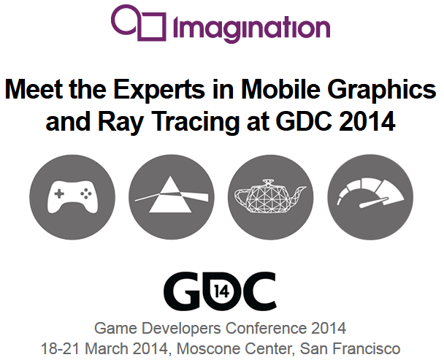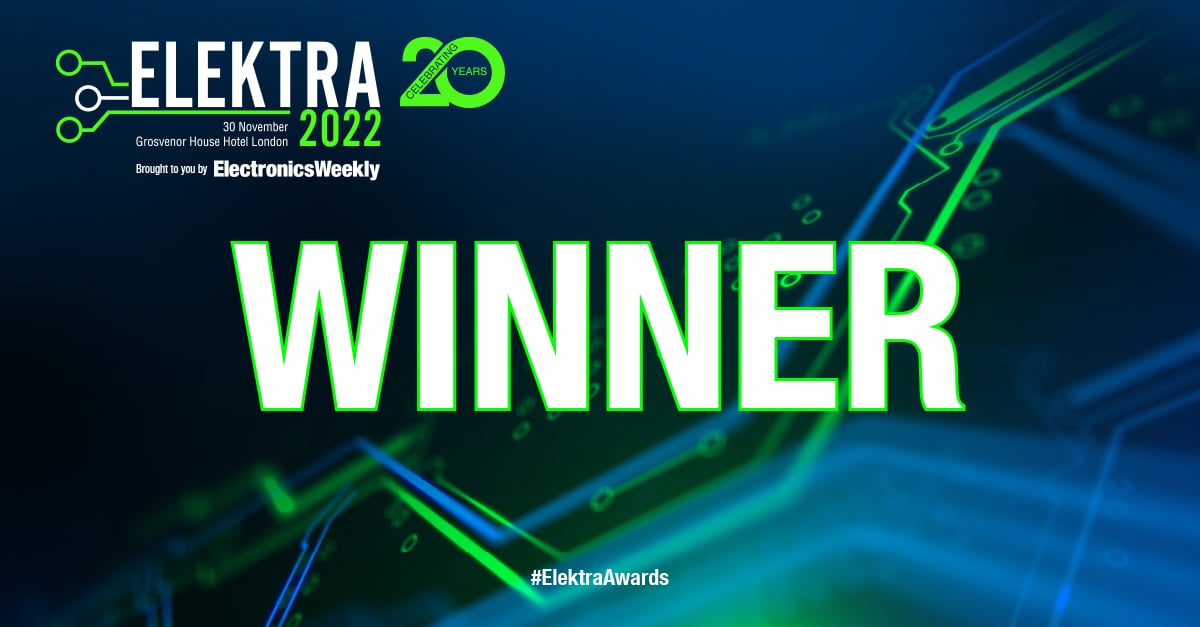- 06 March 2014
- Imagination Technologies
GDC 2014 marks perhaps one of the most important chapters in the history of mobile graphics. This year we will be organizing a series of sessions that will focus on ray tracing, a technology that is well known in the professional animation market, but because of cost and power constraints, heretofore unthinkable in mobile devices.
Imagination is the leading provider of unique technologies and tools for mobile graphics. For the past decade, PowerVR has been the world’s most widely deployed consumer and mobile GPU, having already shipped in over 1 billion smartphones, handheld consoles, tablets, TVs and many other devices.
We are now making history by deploying ray tracing technology in the mobile computing market. We believe this will revolutionize the way in which content is produced and consumed. Imagination’s new ray tracing IP has the potential to dramatically improve visual quality or game AI for devices that fit in the palm of your hands.
Here is a summary of the sessions we are organizing at GDC 2014. If you’d like to attend any of these sessions, all you need is a GDC badge to access the South Hall – all sessions will be held in room 301, South Hall on Tuesday, March 18th. Please be aware that availability will be limited by the number of seats in the room.
idc14 sessions at GDC 2014
New Techniques Made Possible by PowerVR Ray Tracing Hardware
Ray tracing-capable GPUs are rapidly approaching. This session will cover the basic design of a programmable ray tracing GPU and how its added capabilities are exposed to developers. We will then cover some use cases for ray tracing including photorealism, a raster graphics-ray tracing hybrid, and a rudimentary physics simulation.
In addition, this session will cover some key techniques for ray traced gaming, including anti-aliasing, light attenuation modeling, and occlusion rays.
Attendees will get a peek at the future of GPU architectures and gain basic knowledge about how to use ray tracing in games.
Practical Techniques for Ray Tracing in Games
Ray tracing has, for many years, been the gold standard of visual realism in 3D rendering; thanks to advances in modern graphics hardware, ray tracing is now a feasible technique for use in games.
This presentation will describe how ray tracing has been successfully integrated into the Unity engine and combined with traditional rasterized 3D graphics. Accurate shadow rendering is a key component of visual realism. Ray traced shadows can provide good performance, accurate penumbra, and they avoid some of the artifacts and pitfalls of shadow maps and shadow volumes. Reflections are an obvious application for ray tracing in games. Reflections and refractions off irregularly shaped objects can add an element of realism that is difficult to achieve any other way.
This session will cover the technical details of how these effects are blended into the Unity engine’s rendering pipeline without sacrificing real time frame rate.
Attendees will gain an understanding of how ray tracing can be used to enhance their current-generation game engines in a meaningful way. They will also develop an understanding of which effects are possible for which levels of ray tracing performance.
Profiling and Debugging Mobile Graphics with the PowerVR SDK
In this session, we will show attendees how the PowerVR Insider Graphics SDK’s analysis tools can simplify the often treacherous graphics debugging stage of development and enable developers to get the most out of PowerVR GPUs.
We will guide attendees through the key features of each utility and provide examples that demonstrate how to use them effectively. Also, we will explain how to best integrate the utilities into custom analysis tools.
Attendees will leave with sufficient knowledge to utilise the tools to streamline 3D graphics development.
Bringing Console Quality Lighting to Mobile (panel discussion)
As the performance and feature set of mobile graphics hardware improves, the point of convergence between rendering techniques on PCs, consoles and mobile devices is in sight. This will simplify the production pipeline and, in turn, reduce development costs. However, this convergence requires robust rendering engines that can cope with a broad range of device capabilities.
In this session, our panel of 3D graphics veterans will discuss the technical challenges of bringing complex, dynamic, physically-based lighting techniques to low-powered devices. Additionally, we will consider new and exciting technologies that could, for the first time in the history of graphics, put mobile ahead of the pack.
Attendees will gain unique insight into the technical challenges faced by industry leaders targeting a wide range of devices with different performance characteristics. They will leave with a better understanding of how to evolve their production pipeline to cope with the broad landscape of future gaming.
The panel includes:
-
- Victor Bernot, Lead vfx Developer at Gameloft
-
- Timothy Lottes, UE4 Rendering Architect at Epic Games
- James McCombe, Director of Research for PowerVR Ray Tracing, Imagination Technologies
- Aras Pranckevičius, Graphics Architect at Unity Technologies
Our host for this discussion will be Peter McGuinness, Director of Multimedia Technology Marketing, Imagination Technologies.
Cool sessions from PowerVR Insider members
Next-Generation AAA Mobile Rendering (Epic Games)
Next-generation mobile graphics hardware is now reaching a performance and feature level that makes it possible to implement advanced rendering techniques that were previously only considered for PC or gaming consoles. However, there are fundamental technical differences that should be considered in order to get the most out of modern mobile GPUs. This session provides a detailed analysis of next-generation mobile graphics hardware and points out special caveats and opportunities that are specific to mobile. We will explain how advanced rendering techniques such as HDR, physically-based rendering and image-based lighting were brought over to mobile platforms in Unreal Engine 4.
OpenGL ES 3.0 and Beyond: How To Deliver Desktop Graphics on Mobile Platforms (Intel)
See how the latest release of OpenGL ES brings the power of desktop graphics to the mobile development space. Android devices are shipping with powerful graphics hardware. Many of these devices share the same capabilities of desktop PC systems. We’ll give an overview of the latest features of OpenGL ES 3.0 and OpenGL ES Next and demonstrate the power of these features with illustrative examples giving developers the tools for delivering the most powerful mobile graphics experience possible.
If you are attending the event, make your way to the Imagination Technologies booth (#402) at the GDC Expo hall for a personal look at the latest in mobile graphics. You will find our experts there, ready to answer any questions you might have related to the sessions or our technologies.
Make sure you follow us on Twitter (@ImaginationTech) and come back to our blog for the latest announcements from the show.







